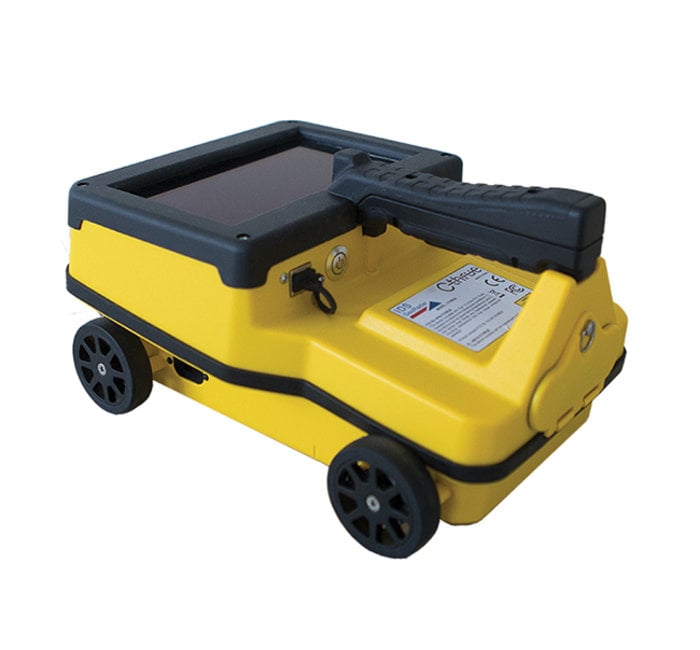Discovering the Secret Advantages of Concrete Scanning in Construction Projects
In the realm of modern construction practices, the use of concrete scanning modern technology has emerged as a crucial device for guaranteeing task performance and architectural honesty. From boosting safety and security measures to accurately discovering utilities hidden underneath the surface area, the benefits of concrete scanning are complex. The ability to streamline job timelines and decrease costs while preserving existing structures is a testament to the worth this technology brings to the building sector. As we delve right into the nuanced advantages of concrete scanning, it ends up being apparent that its impact expands much past surface-level assessments, supplying a peek into the elaborate internet of benefits waiting to be uncovered.
Improved Safety Actions
Making use of advanced concrete scanning technology boosts security steps on building and construction sites by supplying precise discovery of potential hazards hidden underneath the surface area. This modern technology enables construction teams to identify rebar, conduits, post-tension cables, and other obstructions prior to excavation or drilling, dramatically lowering the risk of mishaps. By determining these aspects exactly, workers can stay clear of destructive crucial structural elements, thus preventing injuries, delays, and pricey repair work.
Moreover, concrete scanning plays an important role in guaranteeing the stability of existing frameworks during restorations or developments. By spotting weak points, gaps, or wear and tear within concrete components, designers can address these concerns proactively, enhancing the total security and longevity of the building. This aggressive technique not only reduces the threat of structural failures but likewise lessens the potential for mishaps triggered by unexpected structural shortages.
Fundamentally, the execution of concrete scanning technology works as an aggressive precaution that safeguards both construction workers and the structural honesty of buildings, ultimately contributing to the overall success and effectiveness of building jobs. - RainierGPR Concrete Scanning
Accurate Detection of Utilities
Concrete scanning technology assists in accurate identification of below ground utilities, enhancing construction website security and efficiency. Precise discovery of energies is critical in building jobs to avoid expensive problems, project delays, and most importantly, make certain the security of employees and the general public. By making use of advanced scanning modern technologies such as ground-penetrating radar (GPR) and electro-magnetic induction, building and construction teams can map out the place of hidden pipelines, cables, and other utilities with high degrees of precision.

Time and Expense Effectiveness

Concrete scanning modern technology enables building and construction teams to precisely locate rebar, post-tension cable televisions, and other ingrained objects within concrete structures. This precise info aids in avoiding pricey errors such as accidental damages to critical aspects during drilling, reducing, or coring activities. Furthermore, by recognizing prospective risks in advance, the requirement for pricey repair work or revamp due to problems can be reduced, bring about cost financial savings for the task.

Moreover, the capacity to quickly and precisely find energies underneath the surface area without causing any type of damage not just saves time however additionally avoids costly disruptions to existing framework. In general, the moment and price performance advantages of concrete scanning make it an invaluable device for boosting construction project monitoring and execution.
Conservation of Structural Integrity
Protecting the architectural honesty of structures and framework is critical in ensuring long-lasting security and safety and security. Concrete scanning plays a crucial duty in this preservation procedure by enabling building professionals to recognize potential risks go to my site to the structural honesty of a building or framework prior to they rise into significant problems. Through making use of sophisticated scanning modern technologies such as ground-penetrating radar (GPR) and electro-magnetic induction, construction teams can non-invasively analyze the problem of concrete structures, find rebar, post-tension wires, and various other ingrained elements, and identify any kind of spaces, fractures, or deterioration within the concrete.
Improved Job Preparation
In order to ensure the successful execution of building tasks, thorough attention to detail and extensive preparation are essential parts that stem from a comprehensive understanding of the structural problems recognized via concrete scanning. Eventually, including concrete scanning into the task planning phase enhances control amongst group participants, promotes aggressive analytic, and contributes to the effective distribution of building and construction jobs within spending plan and schedule restraints.
Verdict
Finally, concrete scanning provides numerous benefits in building and construction jobs. By enhancing safety and security procedures, accurately spotting energies, enhancing time and price efficiency, preserving architectural stability, and helping in task planning, concrete scanning shows to be an important tool for successful job execution. Its capability to mitigate threats, boost efficiency, and ensure project honesty makes it a vital possession for building experts.
In the world of contemporary building and construction methods, the use of concrete scanning modern technology has actually arised as a crucial device for ensuring task effectiveness and architectural stability.Concrete scanning modern technology enables construction groups to properly situate rebar, post-tension wires, and various other ingrained objects within concrete frameworks. Through the use of sophisticated scanning technologies such as ground-penetrating radar (GPR) and electromagnetic induction, building groups can non-invasively assess the condition of concrete structures, find rebar, post-tension cords, and various other ingrained elements, and recognize any type of spaces, cracks, or wear and tear within the concrete.
In order to ensure the effective implementation of building projects, careful interest to detail and comprehensive preparation are crucial link components that stem from an extensive understanding of the structural conditions identified through concrete scanning. Ultimately, incorporating concrete scanning right into the task preparation stage boosts control among team members, cultivates aggressive analytical, and contributes to the successful delivery of building and construction projects within budget and schedule restraints.